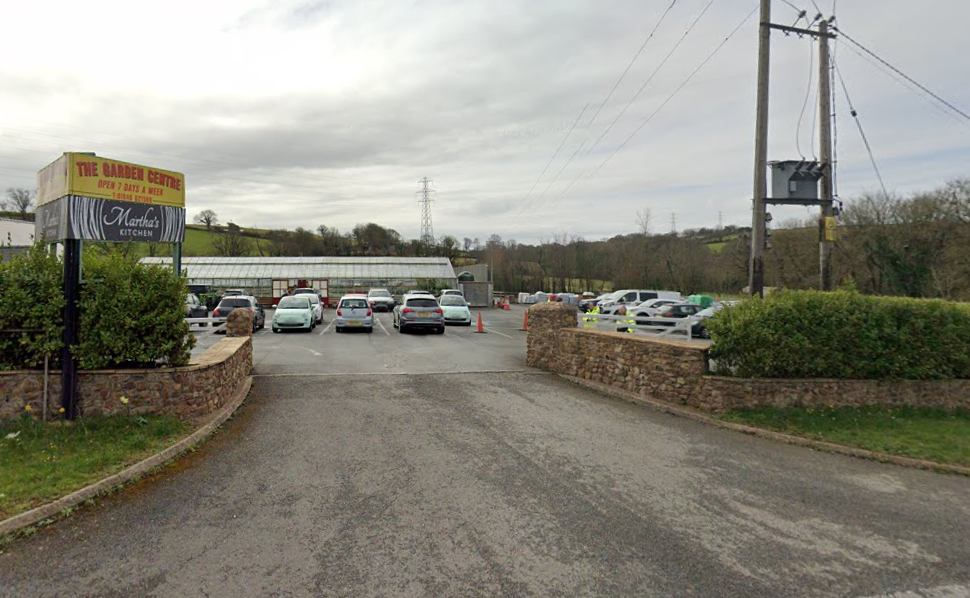Business
Welsh business confidence ticks higher, but output and employment fall at faster rates

THE HEADLINE NatWest Wales Business Activity Index – a seasonally adjusted index that measures the month-on-month change in the combined output of the region’s manufacturing and service sectors – registered 48.0 in December, down from 48.5 in November, to signal a modest and quicker drop in output at Welsh businesses. The fall was due to weak client demand, economic uncertainty and a further decrease in new order inflows. The sharper decline in activity in Wales contrasted with the wider UK trend, which indicated a moderate upturn. In fact, Welsh firms recorded the second-fastest drop in output behind the North East of England.
Welsh companies registered a further contraction in new business at the end of 2023, although the rate of decline eased for the second successive month. The continued drop in new orders was linked to subdued demand conditions and customer postponements. The pace of decrease was modest and the slowest since September, though it contrasted with the UK average which indicated a moderate expansion in new business.
Manufacturers and service providers alike in Wales recorded contractions in new orders.
December data signalled an improvement in expectations regarding the outlook for output over the coming year at Welsh firms. The level of optimism reached a five-month high and was stronger than the series average. Companies noted that positive sentiment was due to hopes of a pick up in customer demand, investment in product diversification and facilities, and the acquisition of new clients.
The degree of confidence remained slightly weaker than the UK average, however.
Welsh businesses recorded a fifth consecutive monthly decrease in workforce numbers during December. The rate of job shedding accelerated to the joint-fastest in over three years and was by far the strongest of the 12 monitored UK areas. Weak customer demand led firms to reduce staffing numbers, with redundancies mentioned by panellists.
Employment fell at Welsh manufacturers and service sector firms.
Businesses in Wales indicated another monthly decline in backlogs of work in December. The drop in the level of outstanding business was marked overall and sharper than the UK trend. Firms highlighted that lower new order inflows enabled them to process incomplete work. Nonetheless, the pace of reduction slowed to the weakest in seven months.
Average input costs faced by Welsh firms increased at a quicker pace at the end of 2023. The rise in input prices was attributed to greater raw material and component costs.
Although sharp, the rate of cost inflation was slower than the series average and the trend seen across the UK as a whole. In fact, of the 12 monitored UK areas, only the West Midlands, North East and Northern Ireland recorded slower upticks in operating expenses.
Welsh firms registered a sharper rise in output charges during December, with the rate of inflation picking up to the fastest since August. Anecdotal evidence stated that higher selling prices were due to the pass through of greater costs to customers.
In line with the trend for input costs, the pace of increase in output charges was slower than the UK average, with only Northern Ireland, the North East and the North West recording weaker upticks in selling prices.
Jessica Shipman, Chair, NatWest Cymru Regional Board, told The Pembrokeshire Herald: “The final month of the year signalled more upbeat sentiment among Welsh firms regarding activity in 2024 as business expectations were the strongest since July, despite output and new orders continuing to contract. Companies anticipated that more accommodative demand conditions and investment in new products and facilities would drive output in the year ahead.
“Although the pace of decrease in new business slowed, reduced backlogs of work led to dwindling activity and the joint-fastest drop in employment since October 2020 as business requirements waned further.
“Meanwhile, rates of inflation remained sticky as input costs and output charges rose at faster paces. Sharper hikes in component and raw material costs were passed through to customers despite a challenging demand environment. Nonetheless, rates of increase were among the weakest in around three years and much slower than the 2023 average as inflationary pressures eased substantially from the start of the year.”
Business
Computer gaming lounge plans for Tenby cinema submitted

FORMAL plans to turn Tenby’s former Poundland and Royal Playhouse cinema to a retro computer gaming lounge have been submitted to the national park.
Following a takeover by investment firm Gordon Brothers, Poundland shut 57 stores earlier this year, including Tenby’s branch on White Lion Street.
In an application to Pembrokeshire Coast National Park, Matthew Mileson of Newport-based MB Games Ltd, seeks permission for a change of use of the former Gatehouse (Playhouse) Cinema, most recently used as a Poundland store to a retro gaming lounge.
This follows a recently submitted application for a ‘CONTINUE? Retro Gaming Lounge’ sign on the front of the former cinema, ahead of the wider scheme for a retro gaming facility at the former cinema site, which has a Grade-II-listed front façade.
A supporting statement for the change of use scheme through agent Asbri Planning Ltd says: “The proposed retro gaming lounge will be inviting to all ages, including families, groups and individuals with no age restriction. The applicant has several similar premises across other parts of the UK and operates under a successful business model.
“This includes a fee being payable to enter the premises which thereby grants access to unlimited game time to all consoles/arcade machines. There will be no slot or coin-based reward games, so the proposal would not be considered/classed as gambling. The site will provide snacks and drinks (including alcohol) which will be canned/bottled drinks.
“The sale of such drinks would be ancillary to the overall function of the premises, and a separate alcohol licence will be submitted, accordingly.”
It adds: “The development would provide a much-welcomed addition to White Lion Rd which will improve the vitality and viability of the immediate area by promoting greater levels of footfall within the area and introduce greater variety to the shopping frontage at this location.”
It proposes opening hours of 10-10, Sunday to Thursday, and to 11pm on Fridays and Saturdays.
The application, and the related signage scheme, will be considered by park planners at a later date.
Prior to being a Poundland, the site was the Royal Playhouse, which had its final curtain in early 2011 after running for nearly a century.
The cinema had been doing poor business after the opening of a multiplex in Carmarthen; in late 2010 the opening night of the-then latest Harry Potter blockbuster only attracted an audience of 12 people.
Business
Independent brewers join call for business rates relief as pub closures feared

INDEPENDENT brewers have joined growing calls for urgent, pub-specific relief on Business Rates amid fears that community pubs across west Wales and beyond could be forced to close.
The Society of Independent Brewers and Associates (SIBA) has warned that changes announced in the Autumn Budget will see pub costs rise sharply over the next three years, with the average pub facing a 76% increase in Business Rates. By comparison, large warehouse-style premises operated by online and technology giants are expected to see increases of around 16%.
The issue will be discussed at a meeting taking place on Monday in Saundersfoot, where local publicans, small brewers and business representatives are due to come together to examine the impact of rising Business Rates and escalating operating costs. The meeting is expected to focus on the future sustainability of community pubs, particularly in coastal and rural areas where they often act as vital social hubs as well as key local employers.
Independent breweries are particularly exposed, SIBA says, as the vast majority of their beer is sold through local community pubs. Many small breweries also operate their own pubs or taprooms, meaning they are hit twice by rising rates. Some independent brewers have reported rateable value increases of up to 300%, creating new costs they say will be extremely difficult to absorb.
New industry research published on Thursday (Dec 12) suggests that introducing a pub-specific Business Rates relief of 30% from April 1, 2026 could protect around 15,000 jobs currently under threat in the pubs sector and help prevent widespread closures.
The call for action follows an open letter sent last week by SIBA’s board, expressing deep concern at the impact of the Budget’s Business Rates decisions on the hospitality sector.
Andy Slee, Chief Executive of SIBA, said: “The last orders bell is ringing very loudly in our community pubs after the shock changes to Business Rates in the Budget.
“Publicans and brewers feel badly let down by a system that still isn’t fairly addressing the imbalance between big global tech companies and small business owners.
“We were promised proper reform of Business Rates in the Labour manifesto last year and a rebalancing of the tax regime, but this has not been delivered. Pubs therefore need urgent help to address the planned increase in costs through a pub-specific relief, followed by full and meaningful reform.”
Those attending Monday’s meeting in Saundersfoot are expected to consider how local voices can feed into the national debate and press for urgent action to protect community pubs across Pembrokeshire.

Business
Cosheston Garden Centre expansion approved by planners

PLANS to upgrade a garden centre on the main road to Pembroke Dock have been given the go-ahead.
In an application to Pembrokeshire County Council, submitted through agent Hayston Developments & Planning Ltd, Mr and Mrs Wainwright sought permission for upgrade of a garden centre with a relocated garden centre sales area, additional parking and the creation of ornamental pond and wildlife enhancement area (partly in retrospect) at Cosheston Garden Centre, Slade Cross, Cosheston.
The application was a resubmission of a previously refused scheme, with the retrospective aspects of the works starting in late 2023.
The site has a long planning history, and started life as a market garden and turkey farm in the 1980s, and then a number of applications for new development.
A supporting statement says the previously-refused application included setting aside a significant part of the proposed new building for general retail sales as a linked farm shop and local food store/deli in addition to a coffee bar.
It was refused on the grounds of “the proposal was deemed to be contrary to retail policies and the likely impact of that use on the vitality and viability of nearby centres,” the statement said, adding: “Secondly, in noting that vehicular access was off the A 477 (T) the Welsh Government raised an objection on the grounds that insufficient transport information had been submitted in respect of traffic generation and highway safety.”
It said the new scheme seeks to address those issues; the development largely the same with the proposed new garden centre building now only proposed to accommodate a relocated garden centre display sales area rather than a new retail sales area with other goods, but retaining a small ancillary coffee bar area.
“Additional information, in the form of an independent and comprehensive Transport Statement, has now been submitted to address the objection raised by the Welsh Government in respect of highway safety,” the statement said.
It conceded: “It is acknowledged that both the creation of the ornamental pond and ‘overspill’ parking area do not have the benefit of planning permission and therefore these aspects of the application are ‘in retrospect’ and seeks their retention.”
It finished: “Essentially, this proposal seeks to upgrade existing facilities and offer to the general public. It includes the ‘relocation’ of a previously existing retail display area which had been ‘lost’ to the ornamental pond/amenity area and to provide this use within the proposed new building and moves away from the previously proposed ‘farm shop’ idea which we thought had merit.
“This revised proposal therefore involves an ‘upgrading’ rather than an ‘expansion’ of the existing garden centre use.”
An officer report recommending approval said that, while the scheme would still be in the countryside rather than within a settlement boundary, the range of goods sold would be “typical of the type of goods sold in a garden centre and which could be sold elsewhere within the garden centre itself,” adding: “Unlike the recent planning application refused permission it is not intended to sell delicatessen goods, dried food, fruit and vegetables, pet products and gifts.”
It added that a transport statement provided had been reviewed by the Welsh Government, which did not object on highway grounds subject to conditions on any decision notice relating to visibility splays and parking facilities.
The application was conditionally approved.
-

 Crime6 days ago
Crime6 days agoPhillips found guilty of raping baby in “worst case” judge has ever dealt with
-

 Crime5 days ago
Crime5 days agoKilgetty scaffolder sentenced after driving with cocaine and in system
-

 Crime5 days ago
Crime5 days agoHousing site director sentenced after failing to provide breath sample following crash
-

 Crime5 days ago
Crime5 days agoMotorist banned for three years after driving with cannabis in system
-

 News16 hours ago
News16 hours agoDyfed-Powys Police launch major investigation after triple fatal crash
-

 Education4 days ago
Education4 days agoTeaching assistant struck off after asking pupil for photos of her body
-

 Crime1 day ago
Crime1 day agoMan spared jail after baseball bat incident in Milford Haven
-

 News7 days ago
News7 days agoJury retires tomorrow in harrowing Baby C rape trial



























